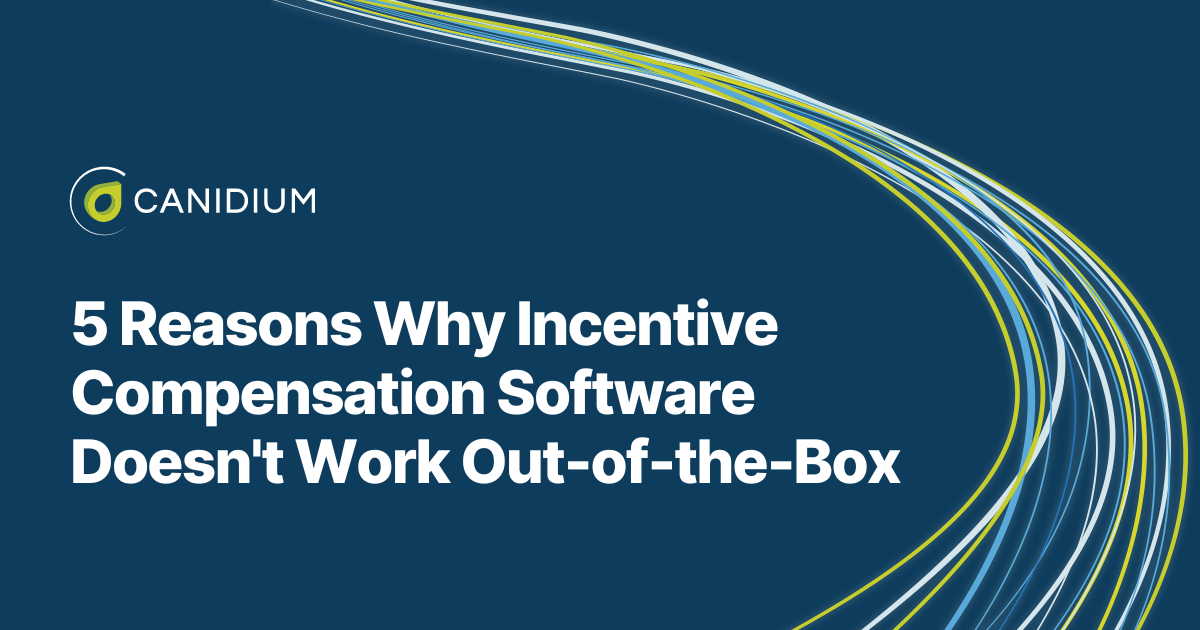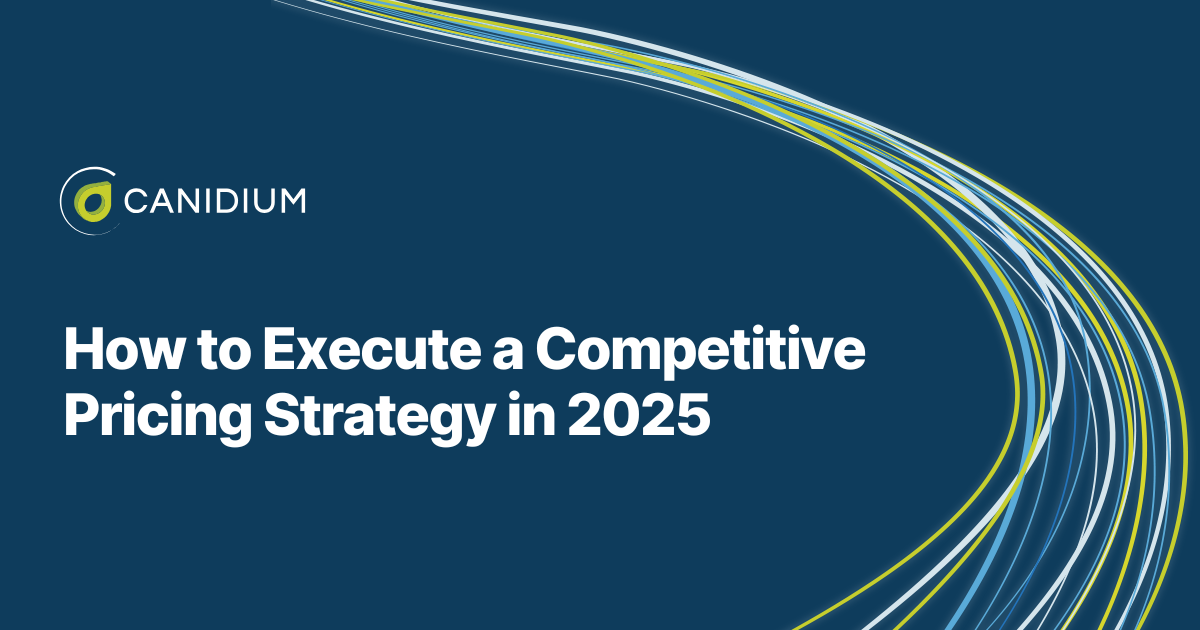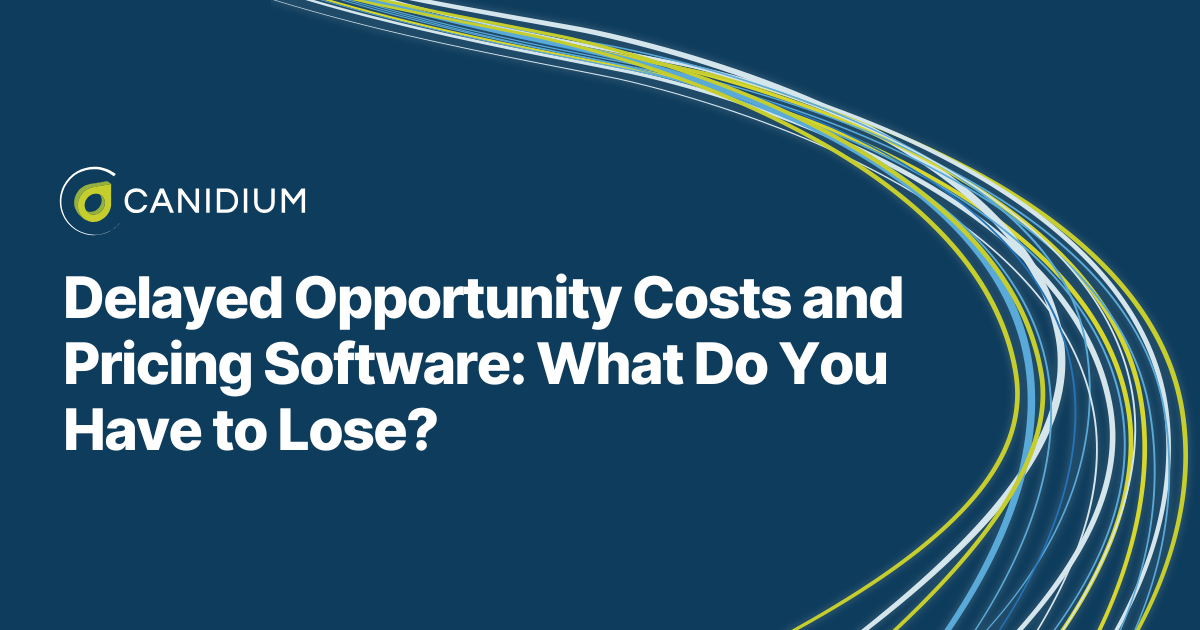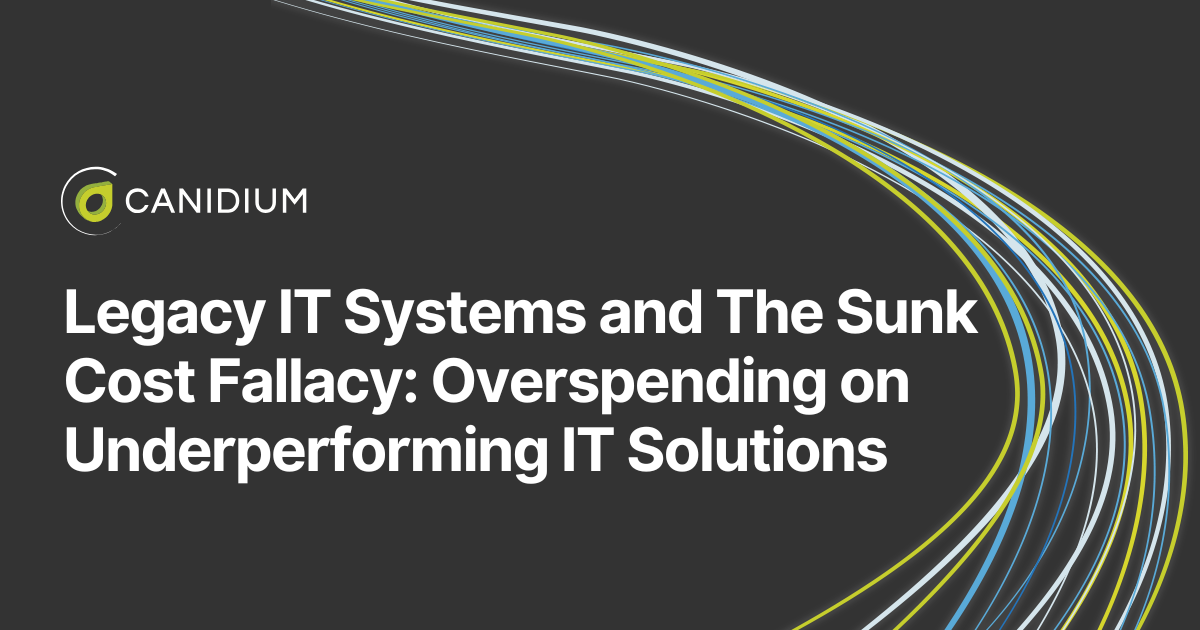The simplicity of out-of-the-box software might seem enticing from a project management standpoint. Still, complex solutions to business challenges are rarely solved with cookie-cutter implementations. Companies have specific needs, pain points, and workflows that they need to address in the design of sophisticated solutions like incentive compensation software. You cannot derive maximum value from your investment without a skilled software implementation (SI) team to configure your out-of-the-box solution according to your unique needs. You may even experience workflow issues and inefficiencies as a result.
At Canidium, our software implementation experts design and configure applications based on the client's requirements. We prevent issues with out-of-the-box solutions by carefully building the new software into the client's existing infrastructure, resulting in a bespoke implementation.
Based on the experience of our subject matter experts, we compiled the five most important reasons you can not use incentive compensation software out of the box in this article.
5 Reasons You Can't Use Incentive Compensation Software Out-of-the-Box
Many businesses are tempted by the promise of out-of-the-box solutions when implementing incentive compensation software. These ready-made products offer the allure of quick deployment and initial cost savings. However, most organizations will find these solutions less than ideal without substantial customization.
Incentive compensation systems are crucial for motivating and rewarding employees. Still, their effectiveness depends on aligning with an organization's specific needs and structures. Factors such as unique business goals, existing technological infrastructure, and complex regulatory environments necessitate a tailored approach. Furthermore, companies vary widely in their operational complexities and strategic objectives, which can render standard software configurations inadequate. This diversity necessitates a deeper look into why customization is essential for effectively deploying incentive compensation software.
To understand why out-of-the-box solutions are often impractical for businesses, here are five problems that occur without solution configuration.
.png?width=1920&height=1080&name=5%20Problems%20with%20(1).png)
1. Inadequate Functionality
One of the most critical issues when choosing incentive compensation software is whether it offers enough functionality to meet your specific requirements.
Out-of-the-box solutions often present generic features designed to serve the broadest possible market. These features typically cover basic compensation strategies but lack the depth needed for more complex, tailored plans that align with nuanced business objectives or industry-specific challenges.
For businesses with unique performance metrics, diverse employee roles, or multi-tiered reward systems, these limitations can become a significant barrier, hindering the effective alignment of compensation incentives with your organizational goals. As your company grows or changes strategically, the static nature of these essential systems means they quickly become obsolete, unable to scale or adapt to new business environments without substantial configuration or complete replacement.
2. Software ROI Limitations
Your ROI from incentive compensation software extends far beyond the initial purchase cost. It encompasses ongoing maintenance, necessary upgrades, and potential operational disruptions due to software limitations.
In 2020, the total cost of poor software quality (CPSQ) in the US was $2.08 trillion, highlighting the financial impact of inadequate software solutions. If you opt for cheaper, less capable systems, you might save initially, but you will often face hidden costs. These can include expenses associated with manual workarounds, additional training due to non-intuitive interfaces, and loss of productivity from frequent system downtimes or failures.
If the software cannot integrate seamlessly with existing systems or cannot be easily modified to meet new regulatory requirements, the costs of compliance failures or integration issues could significantly erode any anticipated savings. You are consequently degrading the total value of your software investment.
3. Processing Time Difficulties
Efficient processing is crucial in compensation management to ensure timely and accurate payouts, directly affecting employee morale and trust in the compensation system.
Out-of-the-box software solutions, however, may not always be optimal for your specific data volumes or compensation structures, leading to longer processing times and increased error rates. This inefficiency is often exacerbated during critical periods such as end-of-year reviews or when implementing changes to compensation plans.
Reliance on manual processes slows operations and increases the risk of human error. Compensation errors can have severe consequences, including employee dissatisfaction, disputes, and legal challenges, which detract from your compensation strategy's overall efficiency and effectiveness.
4. Lack of Automation
As of 2020, 80% of surveyed business leaders reported that they are accelerating workflow automation. The expectation for automated processes is higher than ever. Automation in incentive compensation software should ideally cover data inputs, complex calculations, and even the distribution of compensation statements. However, a lack of configuration in software solutions can reduce the efficacy of automation features, leading to continued reliance on manual interventions. This gap slows down the compensation process and leaves room for error, making it challenging to manage compensation with the speed and accuracy required.
In fact, without robust automation, your HR and sales teams may find themselves bogged down in operational details, detracting from their ability to focus on strategic initiatives and ultimately impacting the bottom line.
5. Minimal Visibility
Transparency in calculating and awarding compensation is crucial for maintaining employee trust and motivation. Detailed visibility helps your employees understand and appreciate the direct correlation between their performance and compensation, fostering a transparent organizational culture.
However, simpler, out-of-the-box compensation solutions often fail to provide sufficient visibility into these processes. Employees might receive limited information on compensation calculations, adjustments, or the rationale behind certain payouts. This lack of detailed reporting can lead to confusion and mistrust, undermining employee engagement and motivation.
Without clear, comprehensive compensation statements, employees may wonder about the fairness and accuracy of their earnings, which can lead to dissatisfaction and decreased productivity.
Overcoming the 5 Problems With Out of the Box ICM Software
While out-of-the-box incentive compensation software may seem appealing due to its immediate availability and potentially lower initial cost, significant drawbacks can ultimately affect its value and effectiveness for your business. The inadequate functionality of such software often fails to meet the specific needs of more complex business models or evolving organizational strategies, leading to a poor alignment with company goals. Moreover, the limited return on investment, driven by hidden costs related to inefficiencies, manual workarounds, and additional training, can negate any initial savings.
Processing time difficulties and a lack of automation compound these issues, decreasing overall operational efficiency and increasing the likelihood of errors in compensation distribution. Lastly, minimal visibility into compensation processes can erode employee trust and satisfaction, impacting morale and productivity.
For businesses seeking a robust, scalable, and effective incentive compensation solution, investing in configuration efforts tailored to your specific needs is often a more strategic and financially sound decision.
Now that you understand the importance of solution configuration, your next step is to learn why hiring a software implementation (SI) partner beats in-house configuration.








